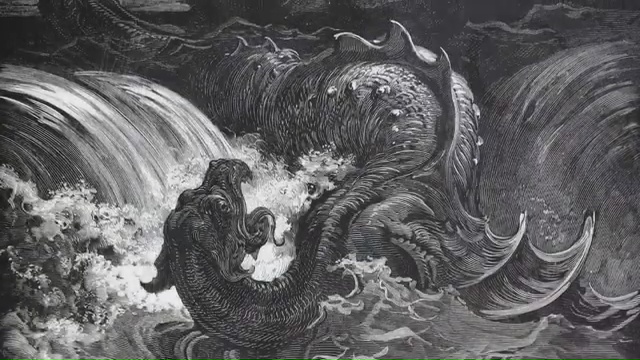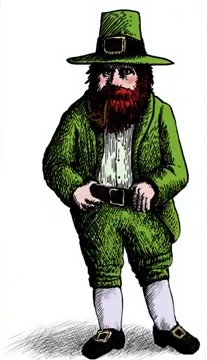Top 200 Mythical Creatures and Monsters from Around the World Part 8
25 - Thunderbird
The thunderbird is a legendary creature in certain North American indigenous peoples' history and culture. It is considered a supernatural being of power and strength. The thunderbird is said to create thunder by flapping its wings, and lightning by flashing its eyes.
24 - Incubus and Succubus
An incubus is a demon in male form who, according to mythological and legendary traditions, lies upon to seduce women and feed off the sexual energy to the point that the target is weakened..Its female counterpart is a succubus. Salacious tales of incubi and succubi have been told for many centuries in traditional societies.
23 - Centaur
A centaur is a creature from Greek mythology with the upper body of a human and the lower body and legs of a horse. Centaurs possess extraordinary strength, enhanced stamina, and outstanding reflexes. They can use their front hooves as formidable weapons.
22 - Echidna
In Greek mythology, Echidna was a monster, half-woman, and half-snake, who lived alone in a cave. She was the mate of the fearsome monster Typhon and was the mother of many of the most famous monsters of Greek myth. She was considered the mother of all monsters.
21 - Kappa
A kappa is an amphibious creature found in traditional Japanese folklore. They are typically depicted as green, human-like beings with webbed hands and feet and a turtle-like carapace on their back. They are often accused of assaulting humans in water and removing a mythical organ called “the Shirikodama” from their victim's anus.
20 - Hydra
The Hydra, is a nine headed serpentine water monster in Greek mythology. It was said that it had the power of regeneration: if you cut one of its heads two will grow instead. In the canonical Hydra myth, the monster is killed by Hercules as the second of his Twelve Labors. The largest of the Hydra's heads is immortal, and cannot be damaged by conventional weapons. The only way Hercules was able to kill this head was to cut it off with a golden sword, gifted to him by Athena.
19 - Grim Reaper
The Grim Reaper is a spectral entity that is said to be the sentient manifestation of Death itself. Although the image has changed slightly over the centuries, the Grim Reaper is almost always shown in a large black cloak, a skeletal face and hands, glowing eyes, and a scythe.
18 - Chimera
The Chimera, according to Greek mythology, was a monstrous hybrid creature, composed of different animal parts. It is usually depicted as a lion, with the head of a goat protruding from its back, and a tail that might end with a snake's head. The Chimera was reputed to be “near invincible,” for she had the strength of a lion, the cunning of a goat, and the venom of a snake. But this monster’s most unusual and deadly weapon, by far, was her ability to breathe fire. The fire spewed out from the goat’s head and devastated any challengers who approached the beast.
17 - Banshee
A banshee is a female spirit in Irish folklore who heralds the death of a family member, usually by wailing, shrieking, or keening. Sometimes she has long streaming hair and wears a grey cloak over a green dress, and her eyes are red from continual weeping.
16 - Phoenix
The Phoenix is an immortal bird associated with Greek mythology that cyclically regenerates or is otherwise born again. Associated with the sun, a phoenix obtains new life by arising from the ashes of its predecessor. Some legends say it dies in a show of flames and combustion, others that it simply dies and decomposes before being born again.
15 - Frankenstein
Frankenstein is an English fictional character who first appeared in Mary Shelley's 1818 novel Frankenstein; or, The Modern Prometheus. Shelley's title thus compares the monster's creator, Victor Frankenstein, to the mythological character Prometheus, who fashioned humans out of clay and gave them fire. In Shelley's Gothic story, Victor Frankenstein builds the creature in his laboratory through an ambiguous method based on a scientific principle he discovered. Shelley describes the monster as 8 feet tall and terribly hideous, but emotional.
14 - Trolls
A troll is a being in Scandinavian folklore, including Norse mythology. In Old Norse sources, beings described as trolls dwell in isolated areas of rocks, mountains, or caves, live together in small family units, and are rarely helpful to human beings. Depending on the source, their appearance varies greatly; trolls may be ugly and slow-witted, or look and behave exactly like human beings, with no particularly grotesque characteristic about them.
13 - Chupacabra
The chupacabra is a legendary creature in the folklore of parts of the Americas, with its first purported sightings reported in Puerto Rico in 1995. The name comes from the animal's reported vampirism—the chupacabra is said to attack and drink the blood of livestock, including goats. Its name means in Spanish: "Goat-sucker".
12 - Leviathan
The Leviathan is a sea serpent noted in theology and mythology. It is referenced in several books of the Hebrew Bible, including Psalms, the Book of Job, the Book of Isaiah, the Book of Amos, and, according to some translations, in the Book of Jonah; it is also mentioned in the Book of Enoch. The Leviathan is often an embodiment of chaos and threatening to eat the damned after life. In the end, it is annihilated.
11 - Mermaid
In folklore, a mermaid is an aquatic creature with the head and upper body of a female human and the tail of a fish. Mermaids appear in the folklore of many cultures worldwide, including Europe, Asia, and Africa. At a first glance you could say that it is the same creature I told you earlier, The Siren. They practically look the same, but Mermaids are typically harmless, while Sirens are evil and are found only in Greek Mythology.
10 - Leprechaun
A leprechaun is a diminutive supernatural being in Irish folklore, classed by some as a type of solitary fairy. They are usually depicted as little bearded men, wearing a coat and hat, who partake in mischief. In later times, they have been depicted as shoe-makers who have a hidden pot of gold at the end of the rainbow. If ever captured by a human, the leprechaun has the magical power to grant wishes in exchange for their release.
9 - Zombie
A zombie is a mythological undead corporeal revenant created through the reanimation of a corpse. The term comes from Haitian folklore, in which a zombie is a dead body reanimated through various methods, most commonly magic like voodoo. Modern media depictions of the reanimation of the dead often do not involve magic but rather science fictional methods such as carriers, radiation, mental diseases, vectors, pathogens, parasites, scientific accidents, etc
8 - Wendigo
The Wendigo, is a creature found in the mythology of the Algonquin people, being described as a large canine beast, that has an enormous pleasure from killing and devouring humans. These beings are the appearance of excess and greed, and according to the legend, any human being who commits an act of cannibalism will turn into a Wendigo.
7 - Werewolf
In folklore, a werewolf is a human with the ability to shapeshift into a wolf, or some kind of a wolf, either purposely or after being placed under a curse or affliction (often a bite or scratch from another werewolf) with the transformations occurring on the night of a full moon. The appearance of a werewolf in its animal form varies from culture to culture, though it is most commonly portrayed as being indistinguishable from ordinary wolves save for the fact that it has no tail, is often larger, and retains human eyes and a voice.
6 - Kraken
The Kraken is a legendary sea monster of enormous size said to appear off the coasts of Norway. It often appears as a large creature with many arms. In many cases, the arms reach as high as the top of a ship's main mast. Legends hold that no ship could stand up to the Kraken. The creature could easily sink ships by wrapping its many arms around them.
5 - Gremlin
A gremlin is a mischievous folkloric creature that causes malfunctions in aircraft or other machinery. Depictions of these creatures vary. Often, they are described or depicted as animals with spiky backs; large, strange eyes; and small, clawed frames featuring sharp teeth. Their intelligence and strength also vary and they are all very mischievous, dangerously violent, and crazily fun-loving. They were believed to have brought down hundreds of planes in WWII.
4 - Vampire
A vampire is a creature from folklore that subsists by feeding on the vital essence (generally in the form of blood) of the living. Their origins are ancient, even in Egyptian mythology such beings are depicted. But they became popular due to Romanian Folklore. Here, the vampires are undead creatures that often visited loved ones and caused mischief or deaths in the neighbourhoods they inhabited while they were alive. Vampires are typically said to be of pale skin and range in appearance from grotesque to preternaturally beautiful, depending on the tale.
Another frequently cited physical characteristic is the inability to cast a reflection or shadow, which often translates into an inability to be photographed or recorded on film. They are immortal and have unnatural strength and speed. They have the ability to control animals, and they can read another person’s thoughts, communicate with them mentally and influence their thoughts. They can only be killed with a wooden stake to the heart or by direct sunlight.
3 - Unicorn
The unicorn is a legendary creature that has been described since antiquity as a beast with a single large, pointed, spiralling horn projecting from its forehead. Most often, a unicorn is depicted as a white horse with a single horn growing from its forehead. Unicorns are thought to be good and pure creatures with magical powers. Their horns have powers to heal wounds and sickness and to neutralize poison. Unicorns also have super-speed and super-strength.
2 - Fairy
A fairy is a type of mythical being or legendary creature found in the folklore of multiple European cultures, a form of spirit, often described as metaphysical and supernatural. Fairies are generally described as human in appearance and having magical powers. Diminutive fairies of various kinds have been reported through centuries, ranging from quite tiny to the size of a human. Various folk theories about the origins of fairies include casting them as either demoted angels or demons in a Christian tradition, as deities in Pagan belief systems, as spirits of the dead, as prehistoric precursors to humans, or as spirits of nature.
1 - Dragon
The most popular legendary creature of all is the Dragon! Mainly because it is found in all the major mythologies but also the fact they have dinosaur-like features which led our imagination to believe that they were once real! A dragon is usually represented as a huge, bat-winged, fire-breathing, scaly lizard or snake with a barbed tail. Dragons in eastern cultures are usually depicted as wingless, four-legged, serpentine creatures. All the dragons are extremely powerful, strong, and intelligent creatures. Their hard scales cannot be easily pierced by swords, arrows, and other weaponry. Some dragons also have deadly poisons in their teeth and claws.


























































